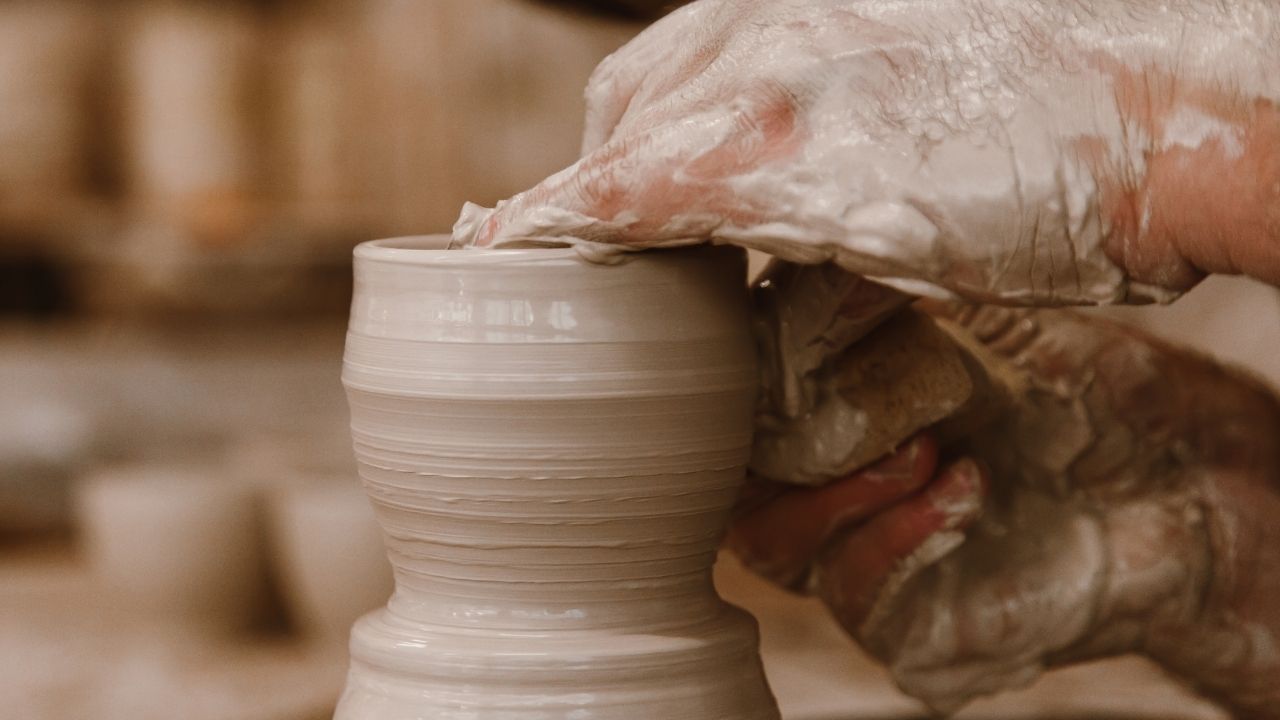
Setting Up Your Home Pottery Studio
Creating pottery at home can be a rewarding and enjoyable hobby. To get started, you'll need to set up a dedicated space for your home studio. Choose a well-ventilated area with plenty of natural light and easy access to water. You'll also need a sturdy table or workbench to use as your pottery surface.
When selecting your clay, consider the type of pottery you want to create. Earthenware, stoneware, and porcelain are popular choices, each with their own unique properties and firing requirements. Beginners may find earthenware clay the most forgiving to work with.
Essential Tools for Pottery Making
In addition to your clay, you'll need a few essential tools to shape and decorate your pottery pieces. A pottery wheel is a popular choice for creating symmetrical pieces like bowls and vases. If you prefer hand-building techniques, you'll need tools like a rolling pin, cutting wire, and various shaping tools.
Other essential tools include a sponge for smoothing and shaping, a needle tool for detail work, and a rib tool for shaping and smoothing curves. You may also want to invest in a set of brushes for applying glazes and decorations.
Techniques for Shaping and Decorating Pottery
There are several techniques you can use to shape and decorate your pottery pieces. Pinch potting involves shaping a ball of clay using your fingers and thumb to create small, simple forms. Coil building involves rolling out long ropes of clay and stacking them to create larger forms.
Slab building involves rolling out flat sheets of clay and cutting them into shapes to create boxes, plates, and other forms. You can also use a combination of these techniques to create more complex pieces.
Once your pottery is shaped, you can add decorative elements using carving tools, stamps, or by applying slip (a liquid clay mixture) to create raised designs. You can also experiment with different glazing techniques to add color and texture to your pieces.
Firing Your Pottery in a Kiln
After your pottery is shaped and decorated, it needs to be fired in a kiln to harden and become durable. If you don't have access to a kiln, you can look for local pottery studios or community centers that offer firing services.
When firing your pottery, it's important to follow the manufacturer's instructions for your specific clay and glazes. Different types of clay and glazes require different firing temperatures and times to achieve the desired results.
Troubleshooting Common Pottery Problems
As you work on your pottery pieces, you may encounter some common problems like cracking, warping, or glaze defects. These issues can often be prevented by properly preparing your clay, allowing pieces to dry slowly and evenly, and carefully following glaze application and firing instructions.
If you do encounter problems with your pottery, don't get discouraged. Experimenting and learning from your mistakes is all part of the pottery-making process. With practice and patience, you'll be able to create beautiful, unique pieces that you can be proud of.
Finding Inspiration and Community
One of the joys of making pottery at home is the opportunity to express your creativity and develop your own unique style. Look for inspiration in nature, art, and everyday objects around you. Don't be afraid to experiment with different techniques, colors, and forms to find what speaks to you.
Joining a local pottery club or taking classes can also be a great way to connect with other pottery enthusiasts and learn new skills. Many communities have pottery studios or workshops that offer classes for all skill levels, from beginners to advanced potters.
Creating pottery at home can be a fulfilling and relaxing hobby that allows you to express your creativity and make beautiful, functional pieces. With a dedicated space, the right tools and techniques, and a bit of practice, anyone can learn to make pottery at home. So why not give it a try and see where your creativity takes you?
 Family Craft ProjectsHome ImprovementCooking and BakingReuse and RecycleDIY GiftsEco-Friendly ProjectsDIY Home SolutionsSeasonal ActivitiesFun and GamesLearn TogetherPrivacy PolicyTerms And Conditions
Family Craft ProjectsHome ImprovementCooking and BakingReuse and RecycleDIY GiftsEco-Friendly ProjectsDIY Home SolutionsSeasonal ActivitiesFun and GamesLearn TogetherPrivacy PolicyTerms And Conditions
